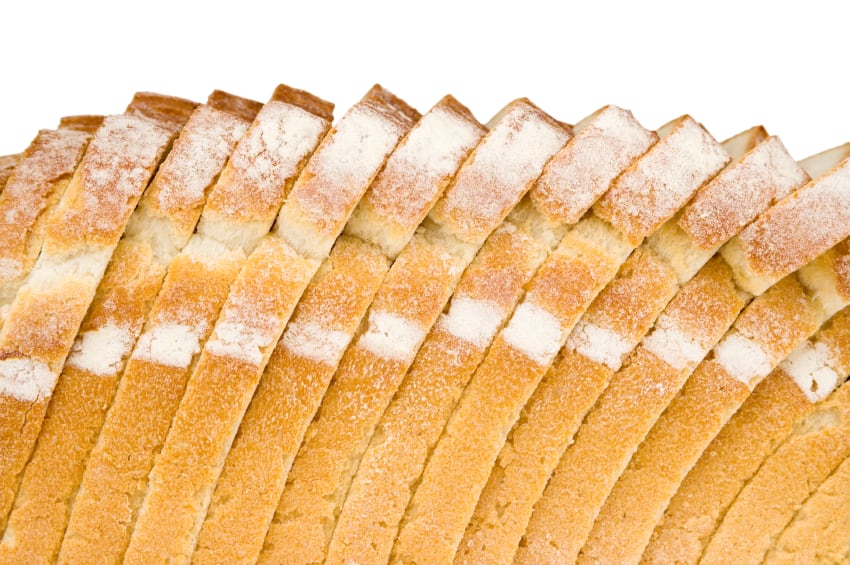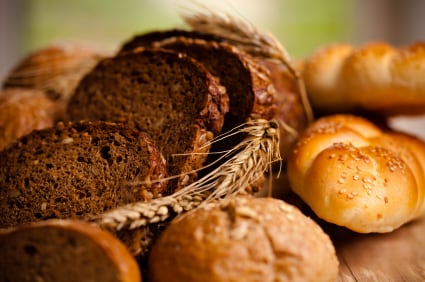Professor Graham MacGregor, also the chairman of Consensus Action on Salt and Health (CASH) and World Action on Salt and Health (WASH), said the findings of the study, funded by the British Heart Foundation and published in the American Heart Association’s journal Hypertension, showed bread and breakfast cereal to represent over one-third of salt in children’s diets.
The study, which used 24-hour urine sampling and photographic food diaries from 340 school-aged children across London, found that cereal- and bread-based products accounted for 36% of the salt in their diets, of which 15% was from bread. Meat products provided 19% and dairy products accounted for 11%.
Speaking to BakeryandSnacks.com, MacGregor said the levels coming from bread and cereals needed to be addressed.
“The food industry has got to get their act together and this study is a notice on this. Bread and cereals are the single biggest source of salt in children’s diets and they [industry] need to reduce it. We are slowly reducing salt in the UK, and bread has come down by around 30%, but we need to do a lot more.
“It’s in industry’s own interest. There’s not a lot of interest in killing off consumers. Dead consumers don’t eat food,” he said.
Findings based on research between 2007 and 2010 showed that children aged 13-17 consumed 7.55 g of salt daily - above the UK’s adult daily recommendation of 6 g. Children aged eight and nine consumed 4.72 g per day and five and six year olds 3.75 g.
Asked if it could be likely that salt levels from bread and cereals were lower now in 2014 than when the research had been conducted, MacGregor said that it was possible because the study period spanned a time when major salt reductions were being made across the UK. However, he said that the increase of processed foods and out-of-home consumption was worrying and could mean salt intake had not declined. “We hope they have come down further, but we wouldn’t be surprised if they haven’t.”

Challenges in salt reduction are ‘all rubbish’
Probed about the functional role salt plays in bread and the taste considerations when reducing levels in bread, MacGregor said that functional challenges in salt reduction were “all rubbish”.
“In the 1990’s, the Federation of Bakers said it had reached its technical limit, but look at what they’ve done since. They come up with all these technical reasons and taste, but it’s just not true. There’s been no rejection of bread because of taste. Obviously we’re not saying do salt-free bread, but make reductions slowly,” he said.
He likened branded bread players to dinosaurs and said supermarket chains were genuinely innovative and entrepreneurial by comparison in terms of salt reduction.
Gordon Polson, director of the UK’s Federation of Bakers (FOB), disagreed and said there were, of course, technical challenges with salt reduction in bread.
“All bread is not the same. MacGregor thinks all bread is, but it’s not and it isn’t all provided in the same way or in the same volumes. It is universally accepted that salt is an ingredient in bread. It’s there to help with the rheology of the dough, not just for taste. Reducing salt in a large plant makes dough stickier and when you’re producing bread in large volumes the dough can’t be too sticky,” Polson said.
He added that it was important to also note that no bakery plant was the same. Newer bakeries or refurbished plants, for example, would enable easier salt reduction for manufacturers, he explained.
He said that industry was committed to salt reduction and it had continually and consistently reduced salt levels in UK bread over a number of years. “The level of salt in bread is less than 1% in the UK – we’re at levels just under 1 g per 100 g.”
“Professor Macgregor also fails to mention the nutritional benefits people, especially children, get from eating bread which includes fiber, including from white bread, and added calcium in white bread,” he added.

Bread will always be a top salt contributor
Polson said the future of salt reduction in bread would rely on a combination of time, innovation and new product launches. But he added that some innovations may not be suitable to all bread products.
However, he said that even if the UK public reduced its salt consumption to 6g per day, bread would still contribute significant levels to the diet.
“It would still be the major contributor, not because of the amount of salt in the product but because of the amount of product someone eats. Someone could be eating a predominantly healthy and balanced diet with salt intake below 6 g, but bread could still be the top salt contributor. Okay, it comes from bread, but that’s the nature of the volume of bread,” he said.
Polson said the importance should be placed not just on absolute salt levels, but the overall progress that is being made in reducing salt in the UK diet. “Like a lot of diet issues, picking off one food or one nutrient is not the way to go. A third of your diet, for example, should be starchy carbohydrates and bread is one example,” he said.
UK diet is an overall disaster
Asked about the wider food industry beyond bread, MacGregor said the lobby groups he represented were not “single dietary nutters” and that they did want to see salt, sugar and fats come down across all food categories.
“What the food industry is currently doing is selling cheap, processed foods that are high in fat, high in salt and sugar with no feeling of satiation or fullness. It’s a disaster.”
He said that the current regulatory environment was not the best for successful salt reduction in food and that responsibility of targets should be taken away from the UK’s Department of Health (DOH) which last week set its 2017 targets, and be passed back to the independent Food Standards Agency (FSA).
He said further research into the salt consumption of UK children would also be useful, acknowledging that his study could have been bigger.
“We confined ourselves to schools in London because that’s where we’re based, but it would be important to get a sample of all children across the UK, but I don’t know who would be prepared to do it.”
Source: Journal of Hypertension
“Salt intake of children and adolescents in South London: Consumption levels and dietary sources”
Published March 2014, online ahead of print
Authors: F. He, N. Marrero, P. Whincup and G. MacGregor
